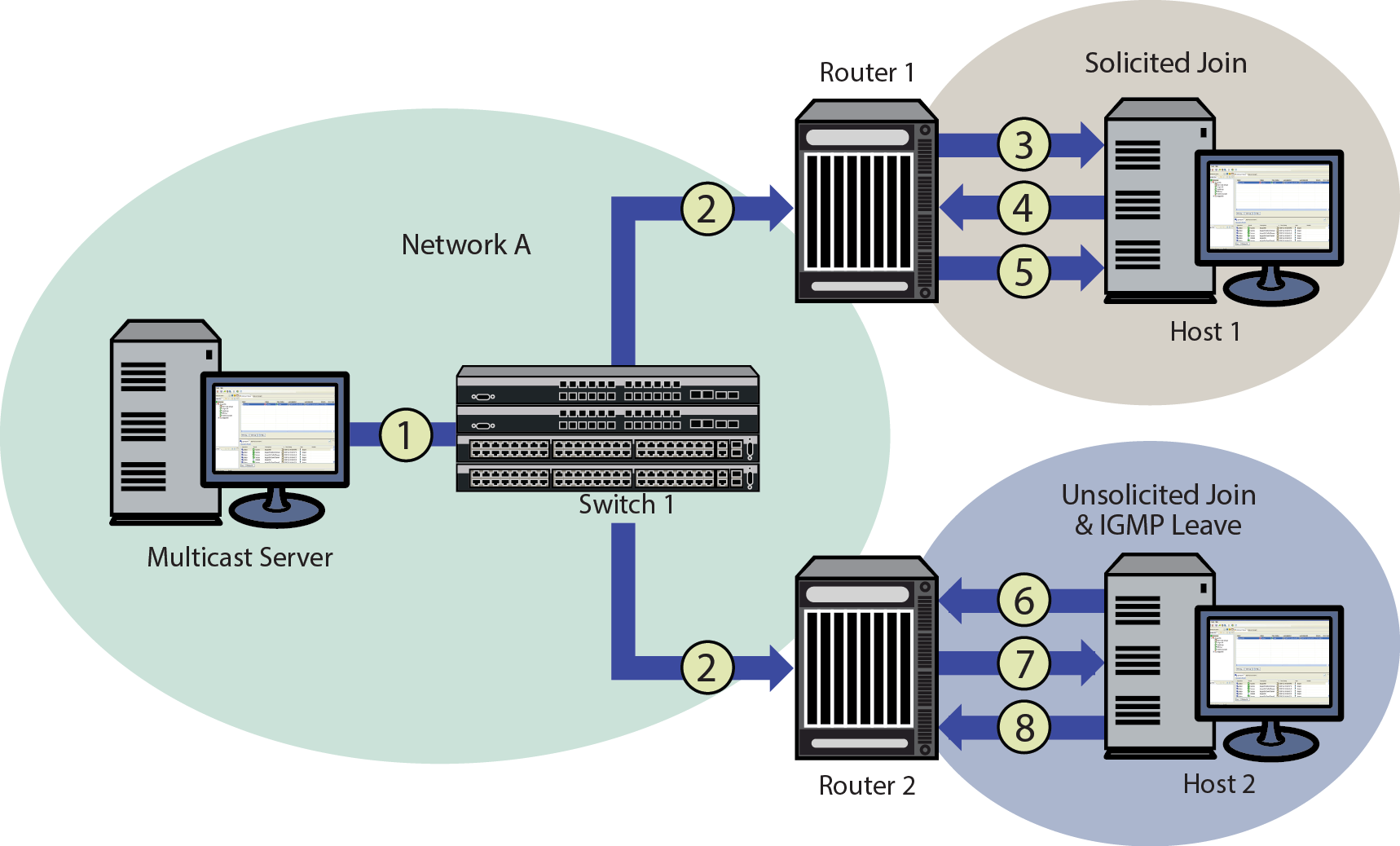Example: Sending a Multicast Stream
Sending a Multicast Stream with No Directly Attached Hosts
Sending a Multicast Stream with No Directly Attached Hosts provides an example of IGMP processing on Extreme Networks
devices when there are no directly attached hosts.
- A single IP
multicast server, with no directly attached hosts, sends a multicast stream into the
network via Switch 1.
- Because IGMP
snooping is disabled, Switch 1 floods the multicast stream to all ports the multicast
stream to all ports on the ingress VLAN.
Each router performs an IGMP forwarding
check to see if there are any hosts that want to join the multicast group on its
locally attached network. Each router drops multicast packets until a host joins the
group using one of the following messages:
- solicited
join (sent in response to an IGMP query produced by the router‘s interface)
In Sending a Multicast Stream with No Directly Attached Hosts, this type
of exchange occurs between Router 1 and Host 1 when:
- Router 1
sends a query to potential Host 1.
- Host 1
responds with a join message.
- Router 1
forwards the multicast stream.
- unsolicited
join (sent as a request without receiving an IGMP query first)
In Sending a Multicast Stream with No Directly Attached Hosts, this type
of exchange occurs between Router 2 and Host 2 when:
- Host 2 sends
a join message to Router 2.
- Router 2
forwards the multicast stream to Host 2.
- When it no
longer wants to receive the stream, Host 2 can do one of the following:
- - Send
a leave message to Router 2.
- - Time
out the IGMP entry by not responding to further queries from Router 2.


 Print
this page
Print
this page Email this topic
Email this topic Feedback
Feedback